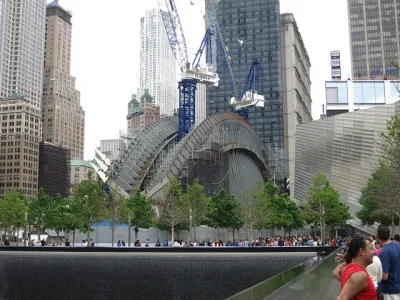New Jersey School of Architecture Director Darius Sollohub writes that transportation planners and engineers should consider what their infrastructure designs will say to today's users and future generations in an essay in InTransition magazine.

Raising the question "Does design matter?" Sollohub concludes it does both from an economic standpoint and as a matter of civic pride. "All too often, value engineering rips at the soul of a project to the point that the public becomes indifferent, if not openly hostile, to it when finished. These constructions often need rebuilding well before a better design would have required it."
Sollohub writes that fear of not appearing cost-conscious influences designers to use cheap materials and "avoid any risk associated with attempting innovation that might reflect the spirit of the age. Fear also influences agencies to punt design to the private sector, whose hyper cost-conscious, in-house designers apply a cookie cutter formula. This results in public infrastructure of stucco-clad, closed-cell foam that looks no different than national brand fast food and convenience stores. Is this what we want to tell future generations about ourselves?"
The author contends that infrastructure designers can learn much from the example provided by Steve Jobs and Apple, which became one of the most successful companies in the world in part by paying attention to design details in everything from its packaging to its store layouts. A century earlier, he notes, the Pennsylvania railroad built its iconic stations and became America’s most profitable corporation.
"The lessons from Apple are many. If you build it well, people will pay for it. This should be a lesson to infrastructure builders: that service alone is not enough to lure riders. A focus on a level of service—where ‘level’ focuses not on capacity, but on aesthetic quality—is essential to promoting success."
FULL STORY: Does Design Matter?

Analysis: Cybertruck Fatality Rate Far Exceeds That of Ford Pinto
The Tesla Cybertruck was recalled seven times last year.

National Parks Layoffs Will Cause Communities to Lose Billions
Thousands of essential park workers were laid off this week, just before the busy spring break season.

Retro-silient?: America’s First “Eco-burb,” The Woodlands Turns 50
A master-planned community north of Houston offers lessons on green infrastructure and resilient design, but falls short of its founder’s lofty affordability and walkability goals.

Test News Post 1
This is a summary

Analysis: Cybertruck Fatality Rate Far Exceeds That of Ford Pinto
The Tesla Cybertruck was recalled seven times last year.

Test News Headline 46
Test for the image on the front page.
Urban Design for Planners 1: Software Tools
This six-course series explores essential urban design concepts using open source software and equips planners with the tools they need to participate fully in the urban design process.
Planning for Universal Design
Learn the tools for implementing Universal Design in planning regulations.
EMC Planning Group, Inc.
Planetizen
Planetizen
Mpact (formerly Rail~Volution)
Great Falls Development Authority, Inc.
HUDs Office of Policy Development and Research
NYU Wagner Graduate School of Public Service

























